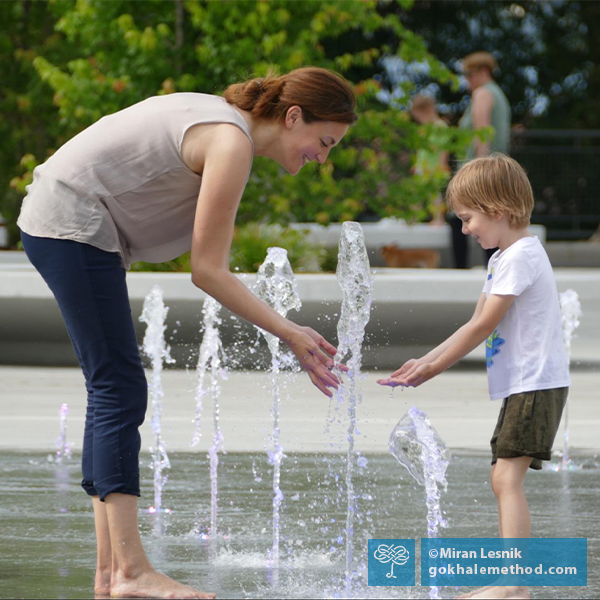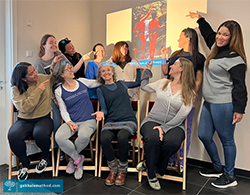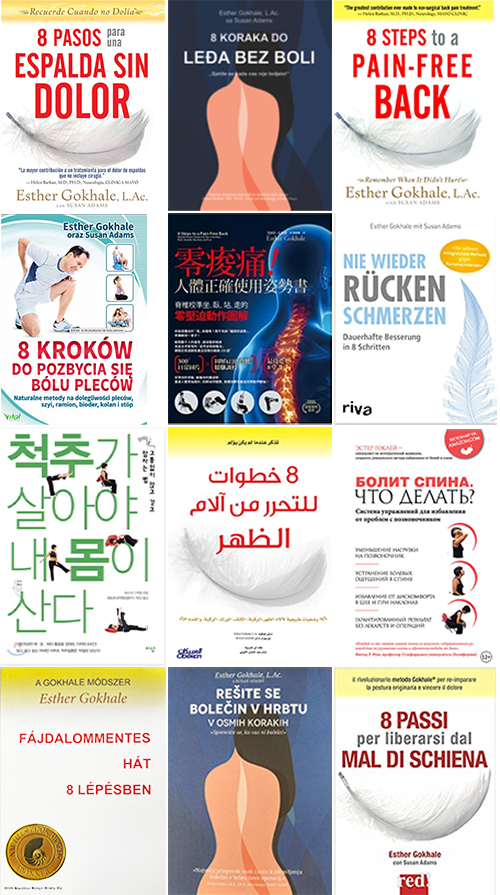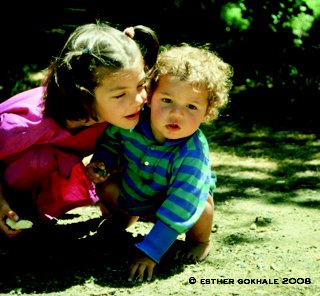Tom Carter’s Back Pain Success Story
The #1 Reason Parents Get Back Pain
Dentists and Neck Pain
The Virtues of a Hard Copy Book in Digital Times
Old Family Portraits Are a Great Posture Tool: Part 3: Hip-hinging in Small Bends
Cultivating a J-Spine with Chair Pose (Utkatasana)
As a student and teacher of yoga and practitioner of the Gokhale Method, I choose yoga poses that make good use of my time. “Chair pose” is well worth the time investment. In fact, it has become one of my favorite strength-building postures. It is useful for cultivating a J-shaped spine. It helps increase gluteal tone. It helps to pattern healthy hip movement. It is strengthening for the legs and spinal stabilizers. And, last but not least, it allows a yoga practitioner to smoothly transition between a standing forward fold and mountain pose — without compression of the intervertebral discs.
Cecily Frederick in chair pose with J-spine visible, overlaid with SpineTracker™ snapshot.
Detail of
Man’s Best Friend for Posture, Part I
One of the great strengths of the Gokhale Method is that you learn it doing practical activities, like sitting and walking; you then practice it during your day-to-day life. Regular tasks like driving the car and household chores, and leisure activities like gardening and playing sports, become not only safe and comfortable, but actually therapeutic. If you are fortunate enough to live with a dog, you have a very special opportunity to hone your posture skills.
Daily dog walks are great training for your posture! Photo courtesy Pixabay.
Firstly, you will probably be walking your dog every day — maybe twice or even three times a day. The regular nature of this activity is a huge boon for
How to Bend and How Not to Bend
Round-backed bending is ubiquitous in modern urban culture. It damages the back. Recognizing this, many health advocates recommend bending at the knees. Done to excess or with poor form, this damages the hips, knees, ankles, and feet.
Surprisingly, poor bending form abounds even in fitness and wellness classes.
An insistence on touching the toes can be counterproductive and result in damage
People sometimes equate being able to touch the toes with flexibility. An imprecise and insistent pursuit of this kind of “flexibility” causes disc damage, hyper-extended spinal ligaments, and a lot of pain. Let’s examine do’s and don’t’s in bending more closely.
DO
Come close in to your tasks and don’t bend





